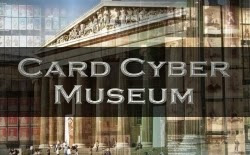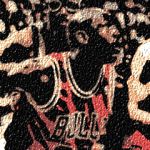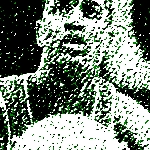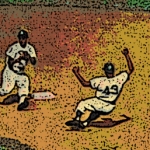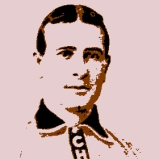Information
The Story Of The Museum
How does any museum get started? Unlike a brick-and-morter museum, we didn't use foundation dollars, bequests from steel magnates, or taxpayer-funded bonds. We didn't throw a gala fundraiser, or sponsor a silent auction. We started with a few cards, a scanner, and open-source database software.
Curator of Collections, Card Cyber Museum
Enjoy a brief narrative about how all this came about.
The Beginning
In the beginning we had an 8-year-old in 1969 with a 15 cent a week allowance who would occasionally go down a few blocks to the local convenience store to buy a few 5 cent packs of Topps baseball cards. 5 cents - 5 cards, can't get any simpler than that (although in the '50s they had penny packs). Later, a bunch of toy cowboys and Indians were traded for a neighbor's 1966 cards - and a collector was born.
Many adult collectors can share similar stories of buying their first cards as children. The simplicity and innocence of building a small collection at that age is in stark contrast to the modern day obsessions with card value, professional grading, edges, corners, inserts, rookie cards and price futures. These obsessions tend to suck the life blood out of the hobby; The Card Cyber Museum attempts, in its own small way, to pour some of that life blood back into it.
To accomplish this, The Card Cyber Museum does a couple of things. One is to focus on complete sets, as opposed to individual cards (you've no doubt heard about the collector with over 2,200 unique Mark Grace cards - google 'Virtual Mark Grace Baseball Cards'). Another is to set aside and disregard (with the exception of a few articles on card condition) ever-changing card values. In addition, a game (Diamond Fantasy), is included as part of the museum, that allows you to 'play' with the cards as a general manager in a pseudo-draft environment. Try doing that with the cards at the Metropolitan Museum of Art!
Recent History
The cards from this collection were neatly organized by year and card number into binders. Fine. That was a step up from the big blue tubs and boxes they used to be housed in. It's fun flipping through binder pages, but to view, say, a 1991 Ryne Sandberg or 1973 Willie Mays, could take a lot of flipping. Also, what if one wanted to see cards in alphabetical order? Or say, all the 1971 Expos? Or all the manager cards? Or every Vada Pinson card in the collection? Or even a random ten cards from the collection (a virtual 'pack' if you will). All these queries could be answered quite easily with a database of card scans. A look around at other virtual card museums on the Internet also found card images presented in a fixed order, usually without card backs. The decision was made to scan all the cards, front and back, and to make sure that the cards could be viewed in a number of creative and fun ways, to encourage browsing.
Additional Impetus
How many people have a copy of the "Topps Baseball Cards" book put out by Warner Books in 1992? You'd have to get an overpriced used copy now, as it is out of print, but it contained color card images from Topps cards from 1951 through 1990. The downsides? The images were kind of small; there were no card backs; the images are organized as if they were in a binder, by year and card number; the cards pictured only ran through 1991; and - it's out of print. Other than that it was a good book! Clearly a database which could be updated and searched would serve the public's needs a bit better - thus, the idea of The Baseball Card Cyber Museum was born and nurtured.
Specifications
Each card was scanned, front and back, at 150 dpi, using a typical consumer grade scanner. Nearly 680,000 scans were required to build the museum to the current level. Scanners are far from perfect (and all those charming old cards are not all the same size - who knew?), so the resultant scans frequently needed a bit of trimming for a clean look. For the eternally curious, even with keeping one eye on a baseball or hockey game, about 120 scans an hour were possible. Thus, about 5600+ man-hours were required just for image processing. Then, each card was cataloged by set, card number, name, sort name, team, position, card type, etc. into an SQL database.


